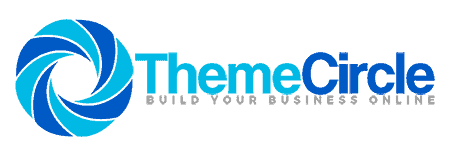In today's tech-driven world, the importance of solid access control systems is clear as businesses evolve and more information turns digital. The need for strong access control becomes more urgent.
A stark figure from the first half of 2023 shows that 95% of cyberattacks targeted remote desktop protocols (RDP), an increase from the year before. This points out an important fact: as cybercriminals get better at what they do, businesses must also step up their access control to protect their online spaces effectively. These statistics are a loud reminder of the need for improved security measures to protect valuable data from unauthorized access.
This article will explore essential strategies for keeping access control systems both secure and efficient, ensuring that only the right people can get to important data and resources.
Implement a Robust Identity Access Management (IAM) Strategy
A solid IAM strategy is crucial for controlling access effectively. Companies need to design and put into action a plan that thoroughly covers how people are verified and granted access.
By doing so, they ensure that only verified and approved users can access the necessary resources. This strategy encompasses the creation of strong policies that dictate how and when users gain access, effectively keeping potential intruders at bay while facilitating a smooth workflow for legitimate users.
Regularly Update and Review Access Permissions
Organizations need to stay on top of their security by frequently updating and checking access permissions. Changes like employee role shifts, departures, or organizational changes often mean access rights need adjusting.
Using automated tools can help manage these permissions effectively, making sure they match current needs without missing anything. These tools also help with detailed audits, which are important for spotting and fixing any weaknesses in the access control system.
Enforce Least Privilege Principle
The basic idea behind access control is simple: give users only the access they absolutely need to do their jobs. This keeps the risk low if an account gets hacked or if someone inside the company tries to do harm.
To stick to this rule, companies need to carefully figure out what access each person needs and keep a close watch to make sure the rules are followed. They should regularly check who has access to what and make changes when needed to keep things tight and secure.
Utilize Multi-Factor Authentication (MFA)
Multi-factor authentication boosts security by requiring users to confirm their identity through multiple validation methods. This approach makes it much tougher for unauthorized individuals to gain access, as they would need to break through several layers of security. It's crucial for organizations to implement MFA at all entry points, especially when dealing with sensitive or critical systems.
Educating users about the benefits and operation of MFA helps ensure they are aware of and willing to handle the minor extra steps involved, in exchange for greatly improved security. Also, pairing MFA with easy-to-use options like biometric scans and mobile alerts can lead to better compliance and stronger security overall. Strategically implementing MFA can serve as an effective barrier against data breaches, thus protecting both individual and company data.
Secure and Monitor End-Point Access
Endpoint security has never been more crucial as devices such as smartphones, laptops and tablets continue to connect to corporate networks. Companies must adopt robust measures like antivirus programs, firewalls and end-to-end encryption in order to protect these devices, keeping a close watch for any unauthorized access or suspicious behaviors that might surface from them.
This combined strategy of securing and overseeing endpoints forms a robust barrier against potential security violations stemming from compromised devices. To bolster these actions, companies can use device management tools that provide capabilities to remotely control or disable devices that may be compromised. Conducting regular security checks can also expose weaknesses at endpoints, enabling IT teams to proactively tackle security challenges.
Educate and Train Employees
Keeping your employees informed is crucial for protecting against security breaches. Regular security training helps them spot and address potential threats. Making security training part of the onboarding process and offering refresher courses ensures everyone, no matter their role, knows how to contribute to security.
This training helps build a strong security culture within the company. Running simulated phishing tests and practical exercises can reinforce what employees have learned and show how well they apply their knowledge. Encouraging open conversations about security helps create an environment where employees are comfortable reporting suspicious activities without worrying about consequences.
Final Thoughts
Keeping access control effective is a continuous task that needs constant updates and adjustments to stay ahead of new security threats. By setting up a strong IAM strategy, regularly updating who has access, applying the least privilege principle, using MFA, securing devices, and training employees, organizations can better protect themselves from unauthorized access. As security threats change, our strategies must change too.






